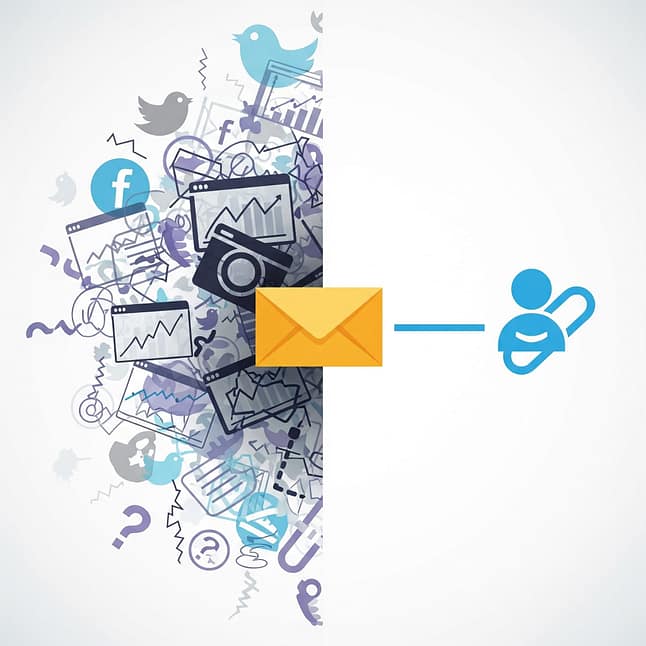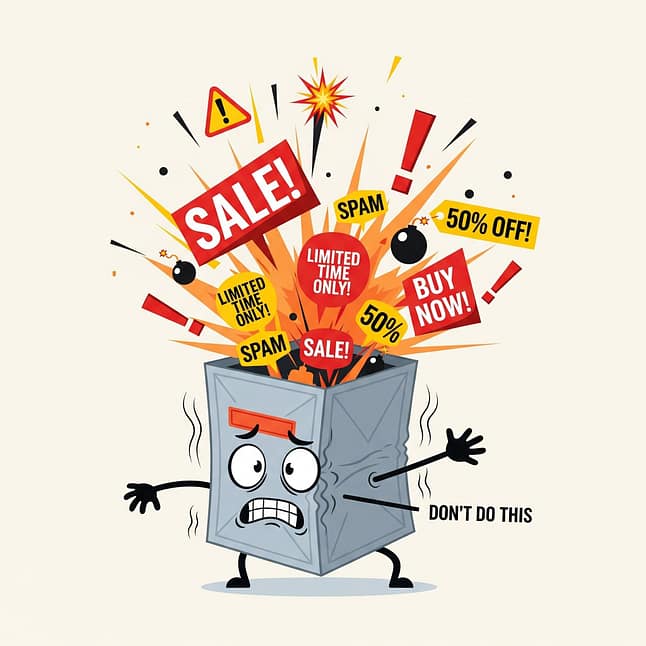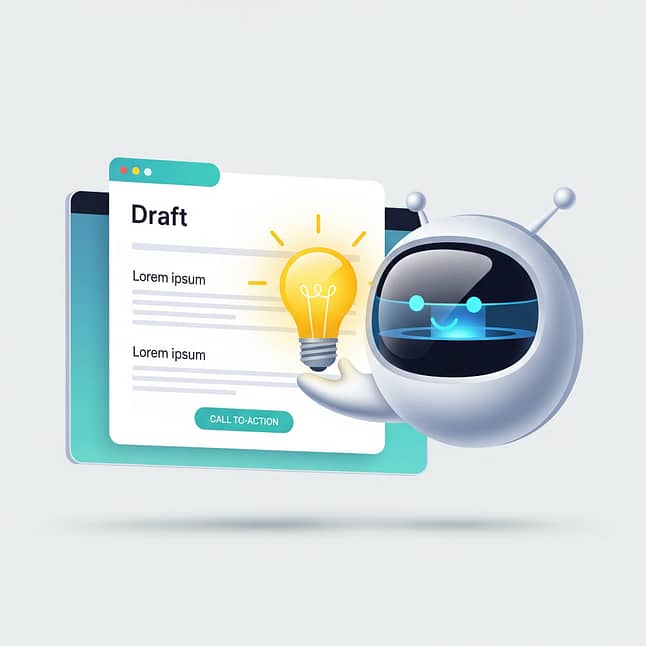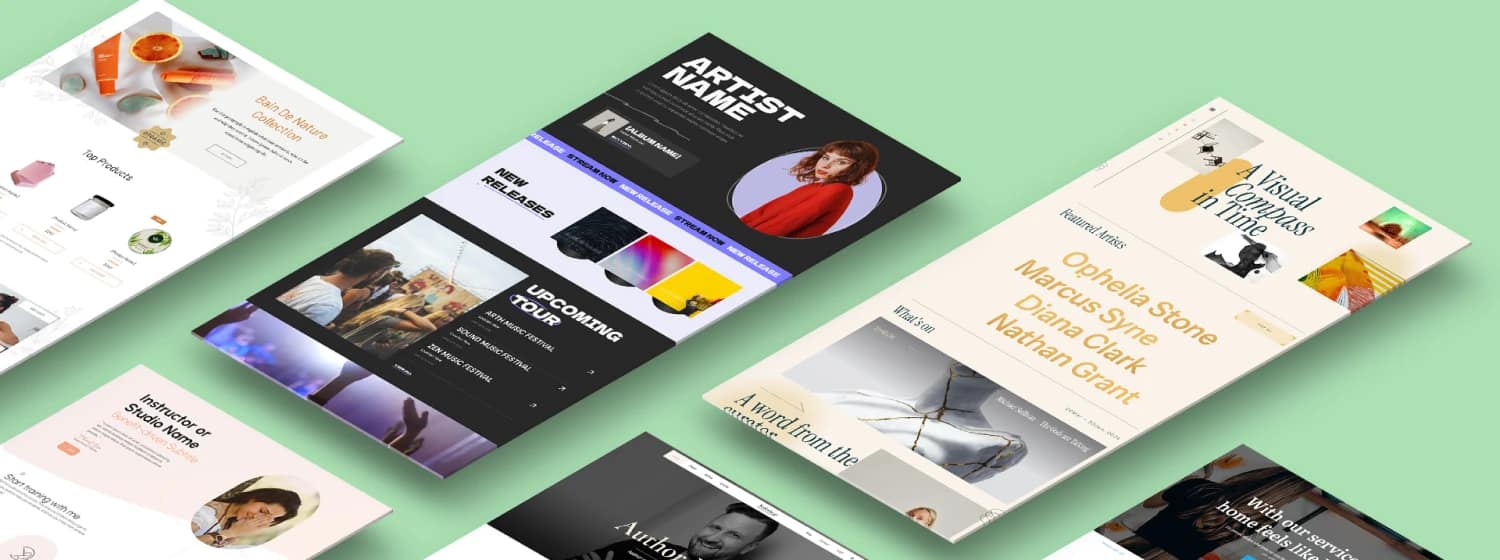TL;DR:
A welcome email series is the bridge between “nice to meet you” and “happy to buy from you.”
In this guide, you’ll learn:
Why a series outperforms a single email every time
The 4 essential emails every welcome flow needs
Common blunders that kill engagement (and how to fix them)
If you’re serious about building relationships that last beyond the algorithm, start with your welcome email series.
Ever feel like you’re building castles on quicksand?
Social feeds shift, ad costs spike, search results change overnight—and all that effort can vanish with a single algorithm tweak.
That’s why your email list is your most valuable asset. It’s not rented space. It’s yours.
And within that space, your welcome email series is the first handshake that sets the tone for everything that follows. It’s where a new subscriber decides:
“Am I in the right place?”
A single email might say “thanks for joining,” but a series builds trust, connection, and momentum.
Done right, it’s not just a greeting—it’s the start of a long-term relationship that drives engagement and revenue.
Will's Take
Some days, digital marketing feels like throwing paper airplanes into a storm. You hope one lands.
But when I look at our email list, that chaos quiets down. These are people who chose to hear from us.
That’s the power of a welcome email series—it’s not another campaign; it’s a conversation you control.
The brutal truth is, relying solely on platforms you don't own is like building your dream house on rented land – and the landlord is notoriously fickle, always redecorating. When you're feeling that digital marketing uncertainty, remember this: your email list is one of the few channels you truly control (if you're just starting, learn how to grow your email list with these creative tips).
But just having an email list isn't the magic bullet. It's what you do with it, especially in those crucial first moments after someone signs up. This isn't just about collecting email addresses; it's about building genuine relationships. And that, my friends, is where the often-underestimated welcome email series steps into the spotlight. It's your first, best chance to nurture that brand new connection and make that direct line not just open, but buzzing with engagement.
What This Article Delivers
- Why a welcome email series outperforms a single email for building connection and driving conversions.
- The 4 must-have emails every series needs—and how to write them fast.
- Real examples of welcome flows that convert (and the psychology behind them).
- Common mistakes that kill engagement (and how to avoid them).
- Tools and automation strategies to personalize your series with ease.
So, if you're ready to stop feeling lost in the digital shuffle and start building real, profitable relationships through that direct line you own, let's talk welcome emails.
1. What Exactly IS a Welcome Email Series (and Why Bother?)

Alright, so we've established that your email list is your golden ticket in this chaotic marketing world – your direct, reliable line. But what happens the moment someone hands you that ticket by subscribing? Do you just pocket it and hope they remember you later? Or do you give them a firm, memorable handshake that says, "Glad to have you, here's what you can expect"?
That handshake, in email terms, is your welcome email series.
And let's be clear: this isn't just a single, lonely email saying "Thanks for signing up!" A true welcome email series is a strategically sequenced set of emails, each with a distinct purpose, designed to roll out the red carpet for your new subscriber. It’s your automated ambassador, working to build rapport, deliver value, and guide them deeper into your world from the second they join.
So, Why Bother? The Astonishing Power of a Warm Welcome
"Okay, Will," I hear you say, "another series of emails to set up? Is it really worth the effort?"
Let me answer that with a resounding YES... Welcome emails are proven to generate four times more opens and five times more clicks than regular email marketing campaigns. The average open rate for welcome emails is remarkably high, frequently reported around 50%, with some studies indicating figures as high as 91.43%. GetResponse's 2024 benchmarks show an average open rate for welcome emails at a remarkable 83.63%. This stands in stark contrast to the general average email open rate of 39.46% for all campaigns.
And it's not just about opens. Welcome emails are reported to generate up to 320% more revenue per email than other promotional emails(Invespcro). Yes, three hundred and twenty percent more cash, just for saying hello properly. Plus, a whopping 74% of consumers expect a welcome email as soon as they subscribe(Campaign Monitor). They're literally waiting for it! And get this: subscribers who receive a welcome email demonstrate 33% more engagement with the brand over time (Invespcro).
Think about what a well-crafted welcome series achieves:
Will's Analogy
Think of it this way: when someone new walks into your physical store (if you had one), would you just grunt and vaguely point towards the aisles? Heck no! If you had any sense, you'd greet them warmly, maybe ask what brought them in, offer a quick pointer to what they might be interested in. A welcome email series is your digital equivalent of being that awesome, helpful host who makes a killer first impression. It’s the difference between making someone feel genuinely valued and just leaving them standing awkwardly at the door, wondering if they made the right choice.
Ignoring this opportunity is like getting a warm lead on the phone and then hanging up after saying hello. Your welcome series is your chance to make that first conversation count, paving the way for a lasting, and often profitable, relationship.
It boils down to timing and intent! When someone first subscribes, their interest in your brand is at its peak. They expect to hear from you, and they're actively looking for that confirmation and any goodies you promised. Other marketing emails might arrive when they're not actively thinking about you, so that initial welcome has a huge engagement advantage because you're meeting an existing expectation.
Not quite, though they're often closely linked! A confirmation email (especially in a double opt-in process) is purely functional – it asks the user to click a link to verify they own the email address and genuinely want to subscribe. This is crucial for list hygiene and deliverability. The welcome email (or the first email in your welcome series) typically arrives after they've clicked that confirmation link (or immediately after sign-up if you're using a single opt-in process). It's your first real opportunity to deliver value, set the tone for the relationship, and start engaging them. Many systems are set up so that clicking the confirmation link seamlessly leads to the first welcome experience or content.
2. How to Build a Welcome Email Series That Converts

So, we agree a series is the way to go. It’s not just about that initial handshake; it's about the first few 'conversations' that turn a curious newbie into an engaged fan. Now, why a series and not just one? While a single welcome might grab a quick order, data from Mailchimp showed that a welcome series actually pulls in 51% more revenue per automation compared to just one email. We're playing the long game for bigger results here. That's because each email in a well-crafted sequence plays a specific, crucial role.
Now, let's be straight: some of the core components I'm about to break down aren't some mystical, mind-blowing secrets you can only find in a forgotten marketing tome. You’ll see variations of these elements in countless email marketing guides, and for a very good reason: they flat-out work. These are the proven fundamentals. But stick with me, because after we nail these down, we will explore some more unique and revolutionary strategies further on to really make your welcome series stand out.
For now, let's master the classics. While the exact number of emails can vary, the jobs those emails need to do are pretty consistent. Let's break down a common, high-impact flow:
Email 1: The Warm Welcome & Immediate Value (The "You're In!")
Email 2: Connection & Story (The "Here's Who We Are")
Email 3: Highlighting Core Solutions & Guiding to Resources (The "How We Can Help")
(Optional) Email 4: Social Proof / Community / Next Low-Barrier Step (The "Join the Club")
Will's Pro Tip
Look, there's no magic, rigid number of emails – some folks do three, some do five. What truly matters is that each email in your sequence has a clear job to do. Is it making them feel welcome and valued? Is it building trust and connection? Is it clearly showing them how you can solve their specific problems? If an email doesn't have a distinct purpose in moving that new subscriber along their journey with you, then it's just noise. Focus on a logical flow that delivers increasing value, not just on filling their inbox.
This structured approach ensures you're not just sending emails, but building a deliberate, nurturing experience right from that crucial first "hello."
3. Common Welcome Email Series Mistakes (and How to Fix Them)

Alright, you're sold on the idea of a welcome email series. You know it’s your direct line, your golden handshake. But like any powerful tool, if you wield it carelessly, you can do more harm than good. It's surprisingly easy to trip at the starting line and send your brand new, eager subscribers scurrying for the 'unsubscribe' button.
So, let's look at some of the most common blunders that make me (and your potential customers) cringe, and more importantly, how to sidestep them like a marketing ninja.
Blunder 1: The "One and Done" (or worse, the "Crickets Welcome")
Will's Fix: Keep the Conversation Going
It’s simple: implement a series. That first email is just the opening line. You need those follow-up "conversations" (Email 2, 3, maybe 4) to actually build the connection, deliver value, and guide them. Don't be the brand that says hello and then immediately ghosts them.
Blunder 2: The "Hard Sell Ambush"
Will's Fix: Nurture, Don't Nag
Your welcome series is primarily for nurturing, educating, and building trust. Focus on delivering value, sharing your story, and helping them solve a problem. Introduce your products or services organically, as solutions, once you've established that initial rapport. Think "give, give, give, then ask."
Blunder 3: The "Generic Bot Dispatch"
Will's Fix: Inject Your Awesome
Let your brand's personality shine! Use the same voice you use on your website or social media. Use their first name (that’s a basic!). Tell a story. Be authentic. Even if you're a B2B company, there are still humans reading those emails. Show them you're one too.
Blunder 4: The "So... Now What?" Email
Will's Fix: Always Guide the Click
Every single email in your welcome series must have a clear, primary Call to Action (and learn how to use content upgrades to rev up your conversion rates). What's the ONE thing you want them to do after reading that email? Read a blog post? Watch a video? Explore a feature? Check out a product category? Make it obvious, make it easy, and make it singular if possible to avoid decision fatigue.
Blunder 5: The "Squint and Pinch Nightmare" (Mobile Mess-Up)
Will's Warning: This is Non-Negotiable!
Mobile optimization isn't a 'nice-to-have'; it's an absolute must. Use responsive email templates (your ESP should provide these). Keep your design clean and uncluttered. Use a legible font size. Ensure buttons and links are easily tappable. Always, always test your emails on different mobile devices before you hit send on that automation. Not doing this is just lazy and costs you subscribers.
By avoiding these common face-plant moments, your welcome series will be well on its way to actually welcoming, engaging, and converting.
Most reputable Email Service Providers (ESPs) have a built-in preview tool that shows you how your email will likely look on both desktop and mobile screens. Use this feature religiously for every email! Beyond that, always send a test email to yourself and open it on your own smartphone (and perhaps ask a colleague to check on theirs, especially if they use a different type of phone or email app). It's a quick, easy check that can save you from sending out a garbled mess to a large portion of your audience.
4. Tools & AI Tips to Personalize Your Welcome Email Series

Alright, you understand the why and the what of a killer welcome series. Now, let's talk how. First, we'll cover the foundational tools and setup, then we’ll dive into some more revolutionary tactics involving advanced personalization and a sprinkle of AI magic to make your welcome emails truly stand out and work smarter for you.
A. The Essentials: Setting Up Your Welcome Sequence
Before you can wow them with hyper-personalized, AI-optimized emails, you need the basics in place.
Will's Pro Tip
Don't get bogged down in a million different tools right at the start. Pick a solid, reputable ESP that you find intuitive, and make sure it plays nice with your WordPress site. The real magic of a welcome series comes from your strategy and the value you provide in your emails, not from having the fanciest, most complicated software on the block.
B. The Revolutionary Edge: Advanced Personalization & Dynamic Content
Okay, `{{First_Name}}` in the subject line is a good start, but we can do so much better... Personalization, when done right, isn't creepy; it's just good service. After all, personalized emails can deliver six times more transactions (Zeumbula).
Will's Take
This is about immediate relevance. If someone signs up after taking a quiz that identifies them as a 'startup founder struggling with marketing,' your first email shouldn't be generic. It should be, 'Hey, great to see you're building something awesome! Let's tackle that marketing hurdle...' It shows you're paying attention, and it makes that direct line feel instantly valuable.
C. The AI Advantage: Smarter Welcome Emails (The Cutting Edge)
Artificial Intelligence is no longer just a buzzword; it’s actively starting to reshape email marketing, making it more intuitive and effective. While some of this is still emerging for mainstream small business use, the principles are worth understanding now.
Will's Vision: The Adaptive Welcome
This is where it gets really exciting and, frankly, a bit sci-fi in a cool way. Imagine your welcome series isn't just a pre-set path, but an intelligent, adaptive journey. If a new subscriber devours all your content on 'course creation' in email #1 (maybe they came from a Thrive Apprentice lead magnet!), the AI subtly re-prioritizes information about your course-building tools in email #3, maybe even adjusts an offer. It's like having a hyper-intuitive guide for each new lead. Forward-thinking email platforms are increasingly incorporating AI to predict the optimal next interaction for each subscriber. The core principle – hyper-relevance – is what we can all strive for, even with simpler tools.
A Quick Word on Ethics & The Human Touch
With all this powerful tech, from deep personalization to AI, remember the golden rule: be helpful, not creepy. Transparency is key. Don't overuse data in a way that feels intrusive. The goal is to make your emails feel more personally relevant and valuable, not like Big Brother is watching their every click. Always prioritize genuine connection over clever automation for its own sake.
D. Tying it Together: Focusing on a Cohesive, Value-Driven Experience
Whether you're using basic automation or dabbling in AI-driven dynamic content, the end goal for your welcome series remains the same: to forge a strong, positive initial connection by providing immediate and ongoing value.
All these tools and tactics – from segmenting with Thrive Leads and Thrive Quiz Builder to crafting personalized follow-ups – should serve that core purpose. Don't just implement tech because it's new and shiny. Ask: "How does this help me deliver a better, more relevant experience to my new subscriber and strengthen that direct line?"
When your welcome series feels uniquely helpful and tailored, that's when you transform a simple sign-up into the start of a beautiful (and mutually beneficial) relationship.
It's becoming much more accessible! While complex AI systems might be enterprise-level, many popular ESPs are now including useful AI-powered features like send-time optimization or subject line assistance in their standard plans. Look for practical AI that helps you be more relevant, not just fancy tech.
Conclusion: Your Welcome Series – The Start of a Beautiful (and Profitable) Relationship
In a world where algorithms change faster than trends, your welcome email series gives you stability—and control.
It’s where strangers become subscribers and subscribers become fans.
So don’t just send a “thanks for joining.”
Build a sequence that welcomes, teaches, and earns trust.
That’s the kind of marketing that survives any algorithm—and the kind your subscribers actually look forward to.
Your Welcome Series Blueprint: Key Takeaways
So, what are the absolute must-dos? Let's boil it down:
- Embrace the Series: Ditch the single "hello" and craft a strategic sequence that nurtures.
- Deliver Value, Instantly: That first email needs to offer immediate benefit and a warm welcome.
- Connect & Humanize: Share your story, inject your personality, and build rapport beyond just business.
- Guide the Journey: Use clear calls to action in every email to lead subscribers to their next logical step.
- Personalize with Purpose: Leverage what you know (even if it's just how they signed up) to make the experience more relevant. Tools like Thrive Leads (one of the best WordPress lead generation plugins) and Thrive Quiz Builder are your allies here for smart segmentation.
- Dodge the Blunders: Avoid being too salesy too soon, generic, or forgetting mobile users.
- Tools are Helpers, Not Heroes: Use your ESP and tools like those in Thrive Suite to enable your strategy, not define it.
Will's Final Word
Look, building an effective welcome email series takes a bit of thought and setup, no doubt about it. But the payoff? It's huge. You're not just collecting emails; you're cultivating relationships. You're turning lukewarm leads into loyal fans who trust you, engage with your content, and, yes, buy your stuff. In a world where everyone's fighting for attention, being the brand that genuinely welcomes and consistently delivers value is how you win. Stop leaving new subscribers out in the cold. Go build that powerful first impression and start fostering those beautiful, profitable relationships today. You've got this!




Nicely done, Nata 🙂 Stoked to hear you’re ahead of the game, you enjoyed the article AND that you’re <3-ing Thrive!
Hello Jorge, glad you enjoyed the article! Sweet tip about viwomail, I haven’t heard of it before…you’ll have to let me know how your tests turn out from using it 🙂
Cheers!
Sure Dave, I will keep you update 😉
Cheers from Spain!
Glad you enjoyed the post, Ivailo 🙂
I’ve never personally tested sending emails after someone unsubscribes so my thoughts on it are purely speculative. The reason I’ve never tested it is because I want people on my list who WANT to be there, so I’d rather focus on gathering/fostering my relationships with those people rather than trying to chase and win over someone who’s already heading out the door.
However, when someone unsubscribes, it is another chance to gather information about WHY they are leaving so you can improve and try to prevent it from happening in the future. In that sense, it might not be a bad idea!
Glad you enjoyed the tips, Tauqir! Thanks for taking the time to let me know 🙂
Stoked you’re already taking action and using the second example for your own subscribers.
Cheers!
Glad you enjoyed the post Michael!
I set the paywithapost so you can also share on your LinkedIn network, which I’d imagine is more inline with IM (if that’s the area you’re in).
Once a post is live on FB I know you can change the settings on who it’s shared with, so if you have your friends categorized as “IM friends” you could restrict the post to only be shown to them.
If you have other ideas about how you’d share it with a relevant crowd, I’m all ears and would gladly give you access to the swipefile!
Glad the post was nicely timed for you, Joan!
Let me know how it pans out, would love to hear your results 🙂
Hey Ferdinand, sorry it’s not working for you. What happens when you click the green button?
Hi Tom, glad to hear you’re enjoying some of the finer details of the post!
In order to create the opt-in box on this page I used the “content box” element in Thrive Content Builder.
The content box has an “event manager” where you can choose the animation “Animation: Appear from Center (Zoom In)” for the trigger “Comes into Viewport.” This means that the content manager will animate when the user scrolls to the position on the page.
Once you have the content box in place you can customize it to show whatever you’d like: opt-in forms, buttons, pictures, etc.
Hope that helps!
Hi Amit!
Glad you enjoyed the article! Thanks for taking the time to let me know, I really appreciate it and stoked to hear you found it useful 🙂
Hmm, I’m not sure why that’s happening…
Did you ever get it to work? If not just let me know and I’ll figure out a way to e-mail you the content upgrade 🙂
Hi Mike! It was just an experiment 🙂
However, now the content upgrade is available for good!
Hi Claudia, glad you enjoyed the article 🙂
Unfortunately the answer to your questions is: it depends.
My suggestion is to look at your numbers and try to figure out how you can improve them as opposed to looking for numbers that others are getting because they are extremely dependent on factors out of your control: audience, niche, etc.
Thanks Tim 🙂
Stoked to hear you enjoyed the article Brandon!
I agree with your argument that you don’t need to have an established blog, because yes, people always need hand holding…I was more going for the idea that it’s a great strategy when you are an established blog because of all the content and not trying to suggest it’s a strategy ONLY for established blogs 🙂
Cheers, you rock!
No problem Ankush, glad the article came at the perfect time for you 🙂
Hi Karen,
Sorry to hear this is not working for you. You can check your inbox 🙂 The link should be in there 🙂
Hi Nancy, if you’re working with private clients and small groups then you should stay away from automation and instead go with a personal approach. One idea would be to create a quick welcome video for every client where you use their name so they can tell it was created specifically for them 🙂
Glad you enjoyed it Donald 🙂